Introduction
Welcome to our guide on the Rainbow Bridge, an innovative technology enabling seamless asset transfers across NEAR, Ethereum, and Aurora blockchains. This tutorial is created for anyone interested in blockchain interoperability.
The Rainbow Bridge is pivotal in connecting diverse blockchain networks with unique strengths. Throughout this tutorial, we’ll cover the essentials, from initial setup to executing cross-chain transactions, all tailored for easy understanding regardless of your prior blockchain knowledge.
Join us as we explore the capabilities of the Rainbow Bridge, empowering you to navigate the interconnected world of blockchains with confidence and ease.
Blockchain Networks and the Need for Interoperability
Blockchain technology, initially the backbone of cryptocurrencies, has evolved into a diverse ecosystem of independent networks like Ethereum, NEAR, and Aurora. Each platform has unique strengths but operates in isolation, creating a need for a solution that enables seamless interaction and transfer of assets across different blockchains.
The Role of the Rainbow Bridge
The Rainbow Bridge is designed to meet this need. It’s a groundbreaking creation that facilitates the bridge of tokens between NEAR, Ethereum, and Aurora. This interoperability is crucial for leveraging the combined advantages of these networks, making the blockchain experience more cohesive and efficient for users and developers alike.
Significance of NEAR, Ethereum, and Aurora
Ethereum: Known for its robust and innovative contract functionality and broad adoption.
NEAR: Offers scalability and user-friendliness, ideal for modern decentralized applications.
Aurora: Bridges Ethereum and NEAR, combining Ethereum compatibility with high-performance features.
How to Use Rainbow Bridge: A Step-by-Step Guide
Transferring tokens between NEAR, Ethereum, and Aurora is a straightforward process once set up. Follow these steps to execute a cross-chain transaction using the Rainbow Bridge successfully:
Step 1: Access the Rainbow Bridge Interface
- Visit the official Rainbow Bridge website.
- Connect your digital wallet to the platform if it is not already connected.
Step 2: Selecting the Source and Destination Networks
- Choose the blockchain network from which you want to transfer assets (the ‘source’ network) and the network you want to transfer (the ‘destination’ network). Example: Ethereum (source) and NEAR (destination).
- Click on “Connect” to link your wallet.
- If using a mobile version, select your wallet and scan the QR code with your smartphone’s camera.
- For desktop wallets like Metamask, select the Metamask option and follow the confirmation prompts to grant access to your assets.
- Click on “Next” to permit Rainbow Bridge to access your assets, then click “Connect.”


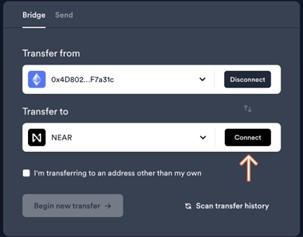
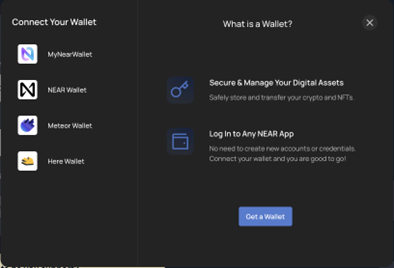
Step 3: Specifying the Asset to Transfer
- Choose the specific asset (e.g., USDT) you wish to transfer.
- Enter the transfer amount, ensuring sufficient balance for the asset and necessary gas fees.
Step 4: Confirming Transaction Details
- Carefully review the transaction details: asset, amount, source, and destination.
- Note the estimated transaction fee and processing time can vary depending on the network congestion.
Step 5: Initiating the Transfer
- After confirming the details, authorize the transfer in your wallet.
- The Rainbow Bridge will start processing the transaction, which includes locking assets on the source chain and minting or unlocking them on the destination chain.
Step 6: Transaction Processing
- Cross-chain transactions take some time. Monitor the transaction’s progress on the Rainbow Bridge interface.
- Await confirmation of the transaction’s completion.
Step 7: Verifying the Transfer
- Once complete, verify the transfer by checking your destination network’s wallet balance.
- Confirm that the received amount matches your expectations.
Step 8: Transaction History
Access your transaction history on the Rainbow Bridge interface for future reference or record-keeping.
Additional Tips:
- Start with a small amount for your initial transaction to familiarise yourself with the process.
- Be mindful of network congestion, which can impact transaction speed and cost.
- Always use the official Rainbow Bridge website to avoid fraudulent sites.












